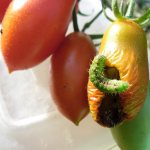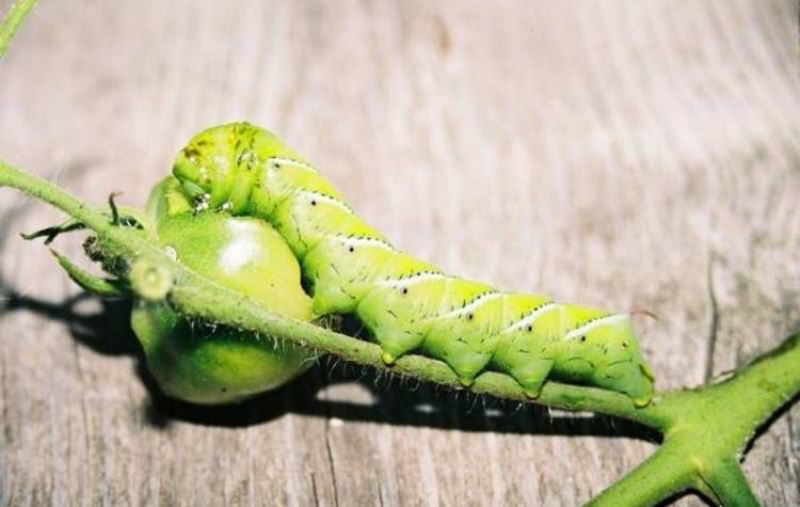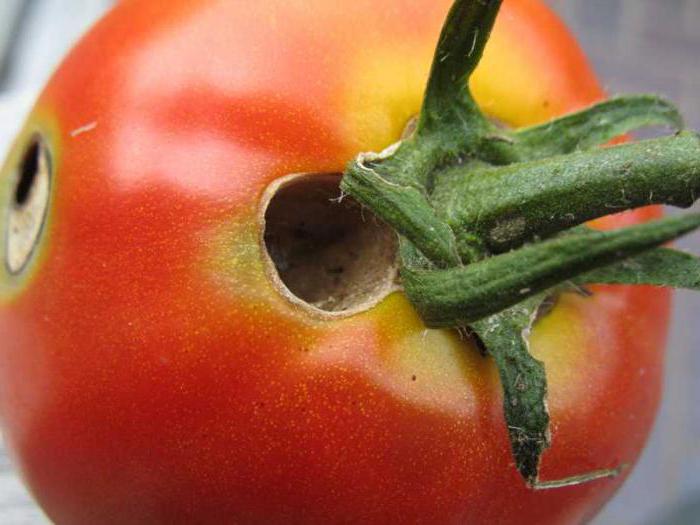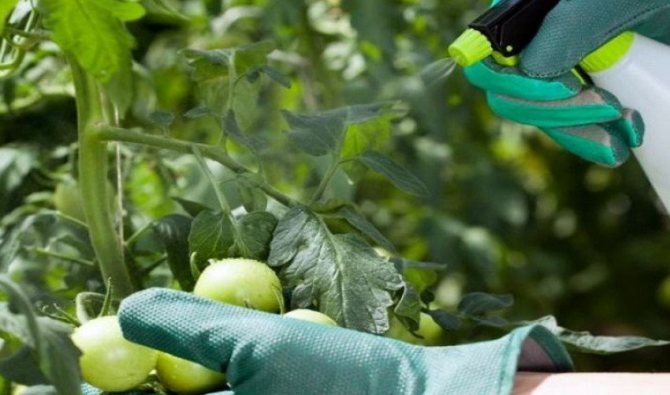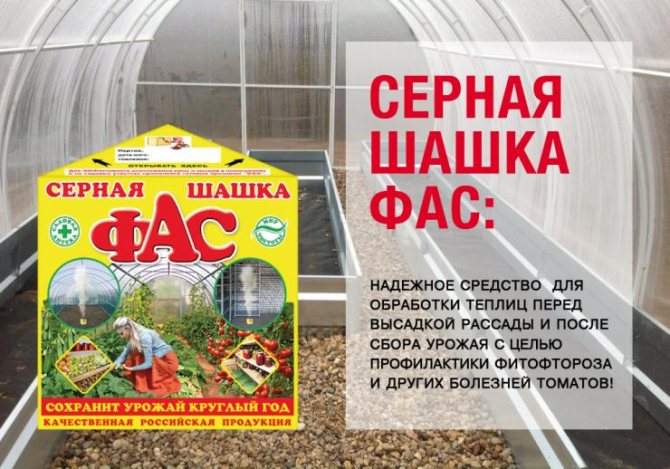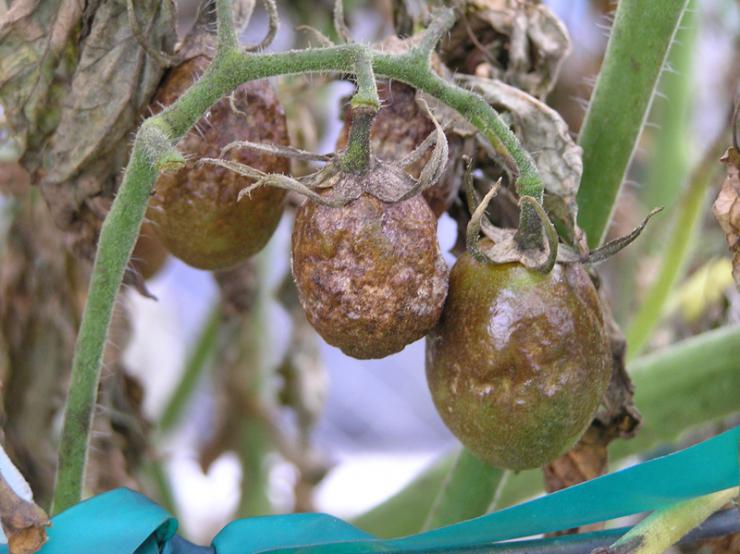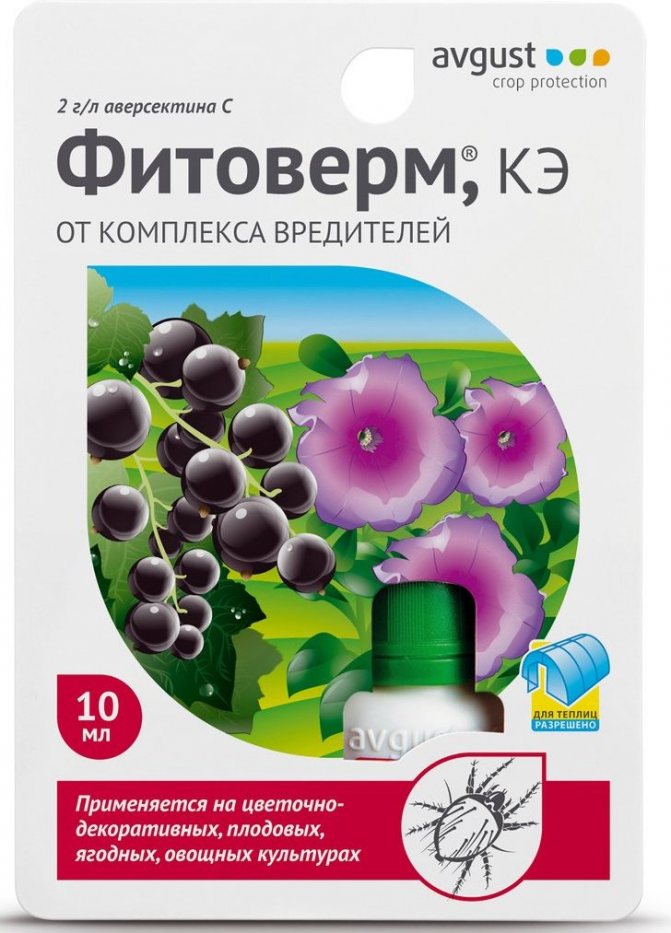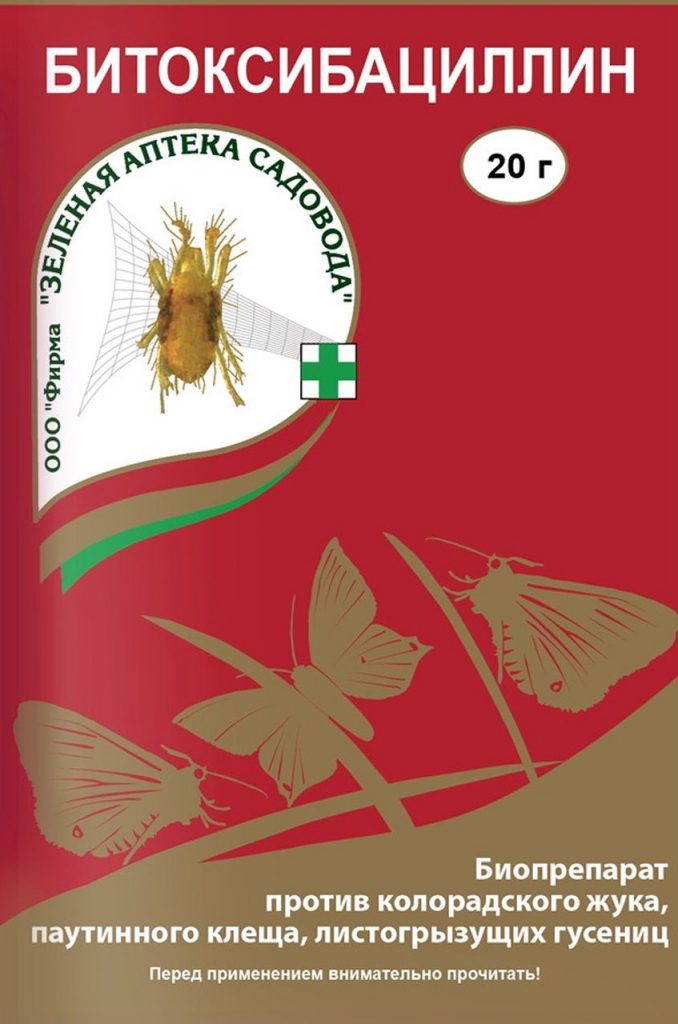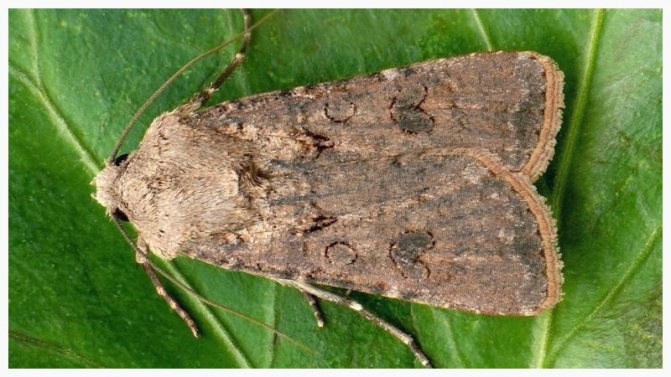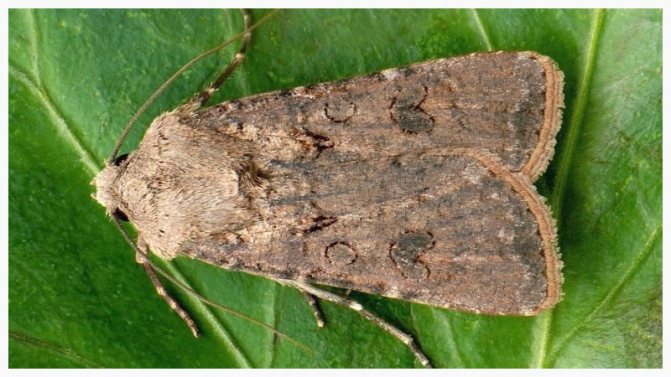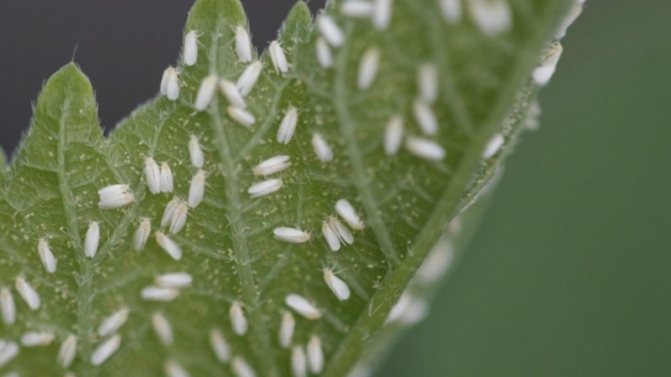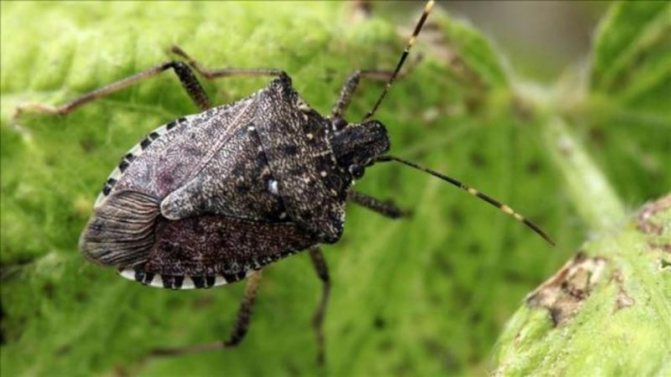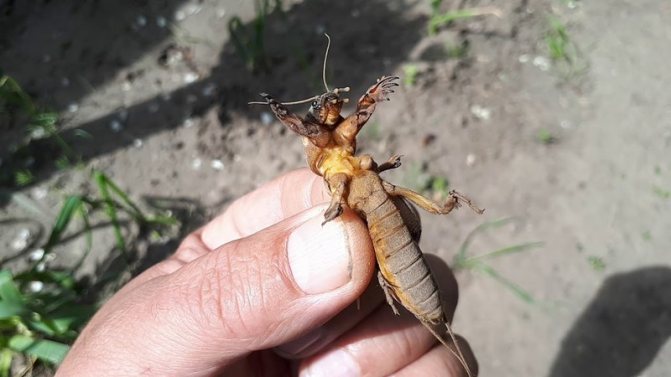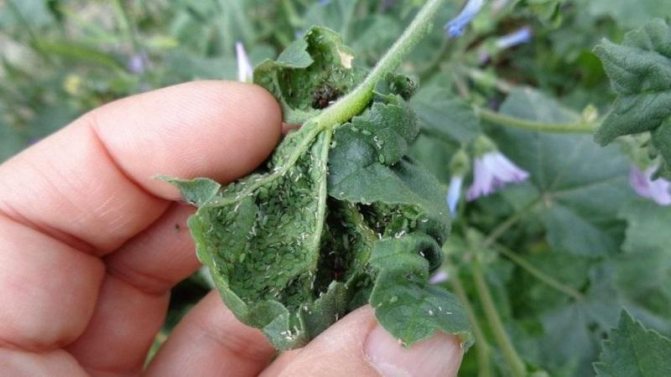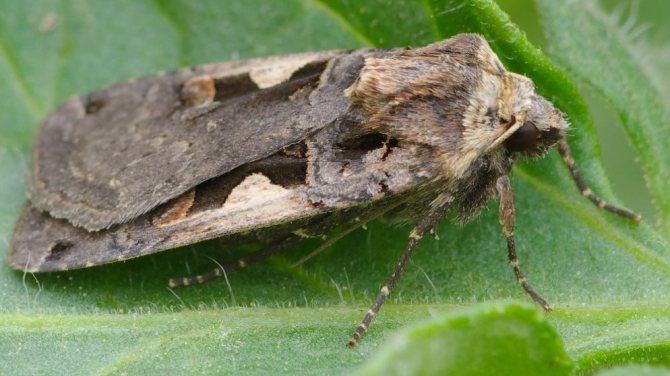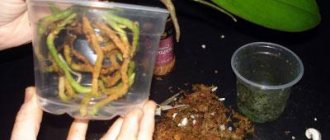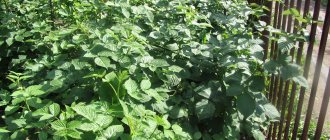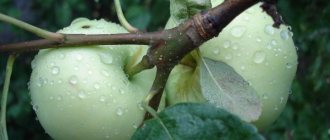Category: Plant pests.
Scoops - small whitish moths resembling house moths and feeding on garden crops. Moreover, it is not butterflies that damage the plants, but their larvae - caterpillars. We will tell you how to deal with a scoop on tomatoes, which remedy for scoops on tomatoes is considered the most effective, what are the folk remedies for fighting a scoop and what chemicals will help get rid of this pest on tomato beds.
A butterfly that lays worms on tomatoes - tomato scoop: description, photo
There are many varieties of scoops. Basically, they all differ in brown, gray or black. The most basic activity occurs at night and in the evening. At this time, they eat up the leaves and damage all garden crops. It should be noted that scoops attack not only tomatoes, but also cabbage, cucumbers, beans and carrots. The caterpillars of the scoopers, which mainly live in the ground and eat up the roots of plants, are very harmful. Also, sometimes they eat ground leaves that are very close to the ground.
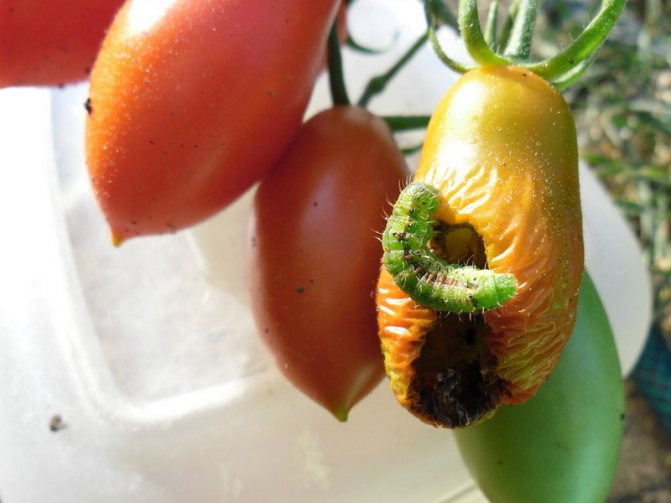
Caterpillar scoop
It should be noted that scoops hibernate below ground and butterflies appear in the first half of May. They fly until the third decade of July. The butterfly is very active. At night, after an active summer, females lay eggs on weeds. It should be noted that the female is very prolific. Therefore, if you do not fight pests, you can lose the entire crop of vegetable crops.
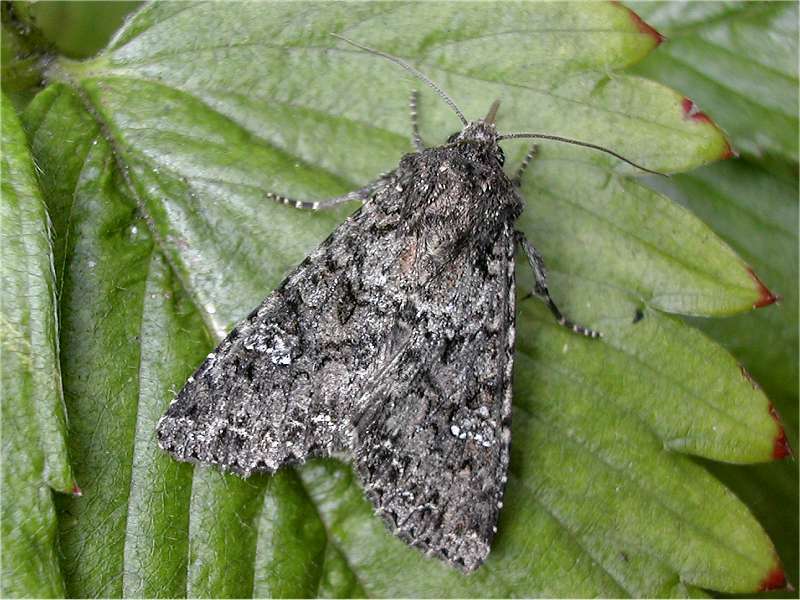

Butterfly scoops
The garden scoop is most often distributed in Ukraine and in the southern regions of Russia. There are two exits, that is, two summers of butterflies. The first falls on the month of May. The second year falls in August. Accordingly, almost all crops are susceptible to damage. Small, that is, the youngest caterpillars eat only the lower part of the leaves, giving them a skeletal appearance. Older caterpillars completely eat all the leaves, not even leaving streaks, and also damage the fruits, form large holes of irregular shape in them.
Butterfly scoops
Biological methods
Caterpillars on tomatoes in a greenhouse: how to deal with biological methods? To destroy pests, trichograms can be used - these are small insects that lay eggs inside the eggs of scoop butterflies. This method is used twice a season.
Insect riders bring significant benefits, the females of which, by puncture, introduce a toxin into the caterpillar, stopping digestion and leading to its death.


Caterpillars on tomatoes in a greenhouse, the reasons for their appearance directly depend on their timely detection. It is not always possible to establish the time of occurrence of pests in order to determine the timing of the start of treatment. If spraying is not timely, the treatment will not give any result. Establishing a massive invasion of insects is possible thanks to pheromone traps.
In conclusion, I would like to note that after reading the article, everyone will be able to answer the question: how to get rid of caterpillars on tomatoes in a greenhouse.
How to process, spray tomatoes from green caterpillars that eat them: preparations
It is necessary to fight the scoop not only after you have seen the eggs or pupae, damaged leaves, but immediately after the clutch is found.In addition, the most effective is prevention, which will prevent the emergence of new insects and their spread. To combat the scoop, both folk remedies and chemicals are used. Biological substances that are active against the young caterpillar are very effective.
List of drugs:
- Agravertine
- Decis
- Zeta
- Arrivo
- Inta-Vir
- Sherpa
Basically, all these substances dissolve in water, after which seedlings and bushes are sprayed. Can be watered in the root area. For more details, see the instructions for a specific drug.
Caterpillar scoop
Prevention measures
Preventing the appearance of a pest in the garden is much easier than then waging a long struggle with it.
The main preventive measures include:
- regular inspection of tomato leaves and stems for eggs or caterpillars;
- careful removal of weeds from the garden in order to reduce the amount of feed for pests;
- digging the soil in autumn and spring leads to the death of pupae;
- planting calendula, basil or cilantro near the plot with tomatoes will scare off the pest;
- destruction of plants and fruits damaged by caterpillars.
How to process, spray tomatoes from green caterpillars that eat them: folk remedies
The scoop on tomatoes can be destroyed not only with the use of pesticides and insecticides. Folk methods are also suitable. The best is the use of herbs. Sometimes experienced summer residents plant calendula, mint near the tomato planting. These plants scare away the scoop, because insects do not tolerate the neighborhood with these strong-smelling plants.
Recipes for folk methods:
- Garlic arrows. To prepare the poison, you need to finely chop 700 grams of garlic arrows and pour them into a bottle. Then all this is poured with plain water, closed with a lid and placed in a cool place for 7 days. After that, 50-70 g of solution is taken from the resulting solution. Dissolve in a bucket of water. The resulting solution is sprayed with tomato crops. Spraying should be done every 10 days.
- Another great scoop control method on tomatoes is to use wormwood. To prepare the poison, 500 g of grass is poured with five liters of boiling water, left for two days in a dark place. After that, filter the solution and dilute it in a ratio of 1 to 10. The resulting liquid is sprayed with tomatoes. This method is effective for both adults and young caterpillars.
- You can fight the scoop with burdock leaves. To do this, you need to cut half a bucket of leaves, fill them with warm water. After that, leave the bucket covered with a lid somewhere warm for three days. Spray the bushes with the resulting solution. Processing is carried out in mid-May, with a frequency of 14 days.
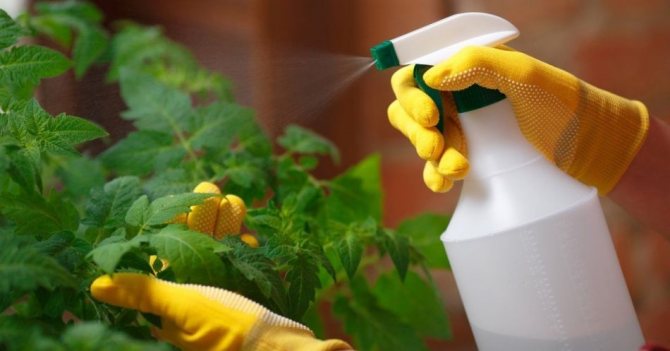

Spray tomatoes
Diseases of tomatoes in the open field
In addition to pests, tomatoes are susceptible to many diseases. Knowledge about the signs and photos of tomato diseases in the open field helps to cope with the problem. Most often, viral lesions are encountered, which significantly reduce the yield and quality of the fruits. The emergence and spread of diseases is associated with environmental conditions and compliance with agricultural requirements. Early detection of the problem and treatment save the crop.
Mosaic
A viral disease that is quite common.


An unpleasant disease for gardeners due to the difficulties of treatment. The disease virus is resistant to temperature extremes and fluctuations in humidity. The only way to save tomatoes from disease is effective early prevention. It consists in processing tomato seeds before sowing. A solution of potassium permanganate (1%) is used.If an adult plant has been infected with a disease, then treatments will not save. The leaves become variegated, the color resembles a mosaic with alternating dark and light areas. The bush will begin to dry out and die. Such plants are removed from the garden and burned. If the variety requires pinching, then it is done very carefully so as not to touch the juice with your fingers. Stepson picks up tomatoes in the morning.
Late blight
This tomato disease is fungal.
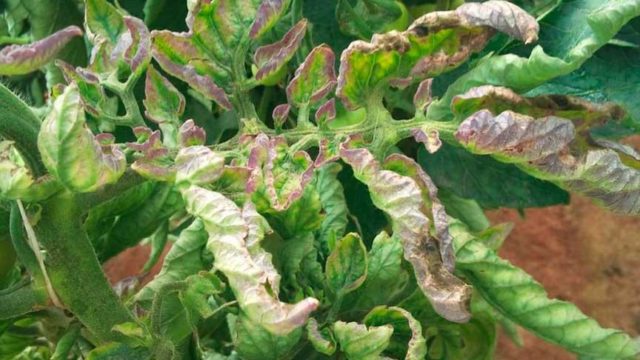

When the disease is affected, brown spots appear on the stems and leaves, the underside of the leaf is covered with a white bloom, brown spots cover the fruits. The spread of the disease is facilitated by temperature drops, high humidity. In order to prevent infection, the seedlings are treated with the "Zaslon" preparation 20 days after planting. The treatment for the disease is repeated with the "Barrier" 3 weeks after the first one. After the blooming of the 3rd brush, the tomatoes are sprayed with a garlic solution of 1 cup of ground garlic and 10 liters of water and 1 g of potassium permanganate. The solution consumption is 0.5 l per 1 sq. m. It is important to observe balanced feeding.
Alternaria or macrosporiosis
The very first symptoms of the disease appear on the lower leaves of the tomato bush. Brown spots begin to grow, then cover the entire leaf, which begins to gradually die off.
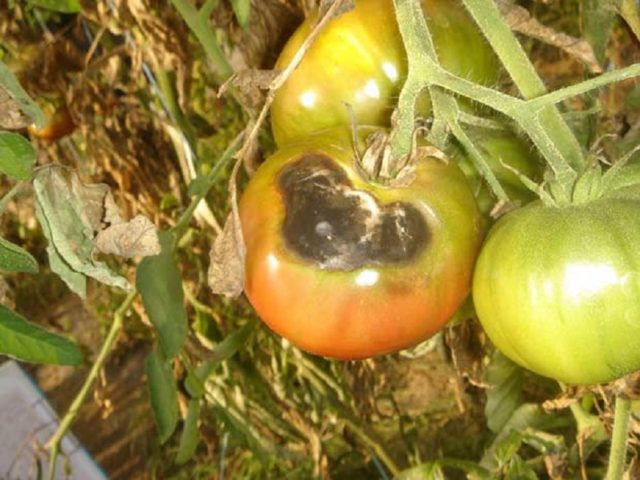

The spots on the stems are transformed into dry rot. The second name of the disease is dry spotting. A distinctive feature is the appearance of a black bloom on the spot. Early ripening varieties are most often affected in warm and humid weather. As soon as the first symptoms are noticed, it is necessary to apply chemical agents - zinc fungicides. Treatments for the disease are repeated 3 times after 2 weeks. It is important not to plant tomatoes next to potatoes. Treatment of tomatoes for disease in the open field can also be carried out with Fitosporin.
Top rot
Symptoms appear on green fruits and look like sunken specks.
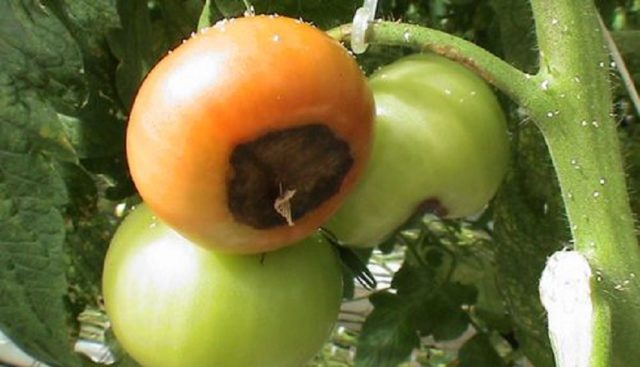

They can be dry black or watery with a putrid odor. The causes of the appearance of the disease are an excess of nitrogen, a deficiency of moisture, a lack of calcium. Measures to combat the disease are considered timely watering, spraying with a solution of calcium nitrate from 1 tbsp. l. substances and 10 liters of water. Diseased tomatoes are burned.
Blackleg
Also a fungal disease that develops with waterlogging or excess fertilizers.
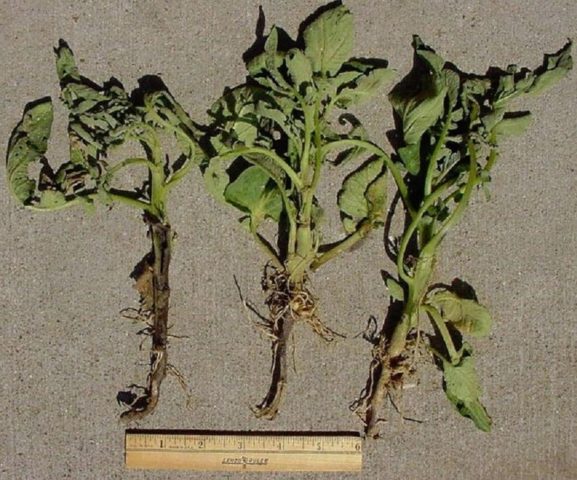

In addition, the causes of the disease can be contaminated tools or the lack of soil disinfection before planting tomatoes. The roots begin to blacken and rot first, then the cuttings. With the development of the disease, the plant looks lethargic, brown spots and drying out appear on the leaves. Removed bushes must be burned. For preventive purposes, treatments with Ross, copper sulfate or Pseudobacterin-2 are carried out. Before sowing seeds, they are treated with a fungicide. The best tomato precursors that prevent disease are sunflowers and peas.
Cladosporium
The second name of the disease is leaf mold or olive spot.
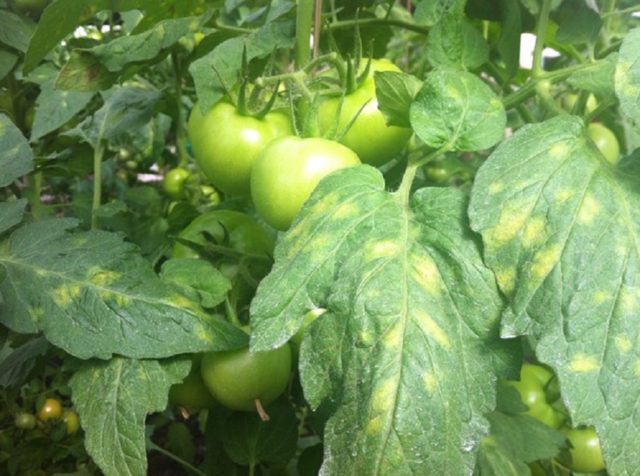

The underside of the leaves is affected. Brown spots with a characteristic gray bloom appear on it. Spores are easily transferred to other plants, remain on clothing or tools. Control measures are to optimize irrigation - with warm water, on time and at daytime temperatures. Preventive spraying against the disease is carried out with the "Barrier" or "Barrier", they also remove old leaves and disinfect the soil. It is important to plant varieties that are resistant to disease.
Gray rot
Fungal disease that spreads during the end of the growing season.
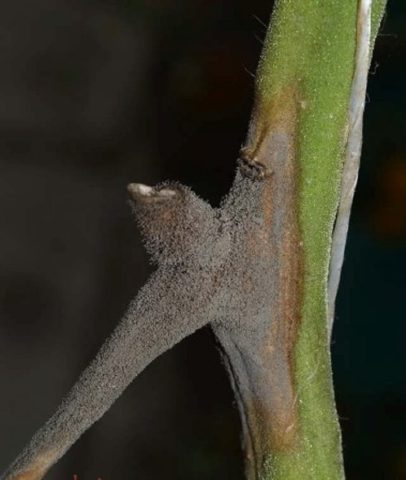

The fruits of tomatoes are affected. The conditions for the appearance of the fungus are rainy and cool weather. The fruits are covered with small spots, which then grow and give off brown watery spots.Also, the causative agent of the disease develops on flowers, stems and leaves. Vegetable growers often confuse gray rot with late blight. Preventive treatments for the disease are done with Glyocladin or Trichodermin, medicinal - with fungicides. The best time is the day to give the plant time to dry.
Brown rot
To vegetable growers, the disease is known as phomosis.
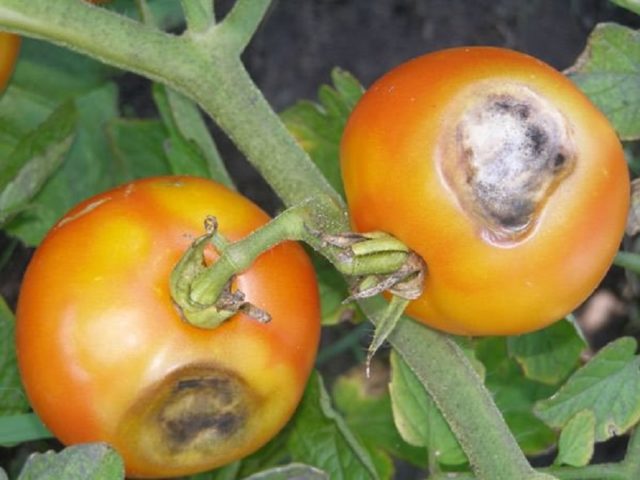

Only tomato fruits are affected. A brown spot is located at the base of the fruit, then rotting continues inward. If the disease has spread to green tomatoes, then they will not have time to ripen and will simply fall off. The fruits affected by the disease are burned, the treatments are carried out with "Zaslon" or Fundazol. Prevention is done with copper chloride or Bordeaux mixture.
Root rot
Greenhouse tomatoes are more susceptible to the disease, but in the open field it develops when planting bushes after cucumbers or excessive watering.
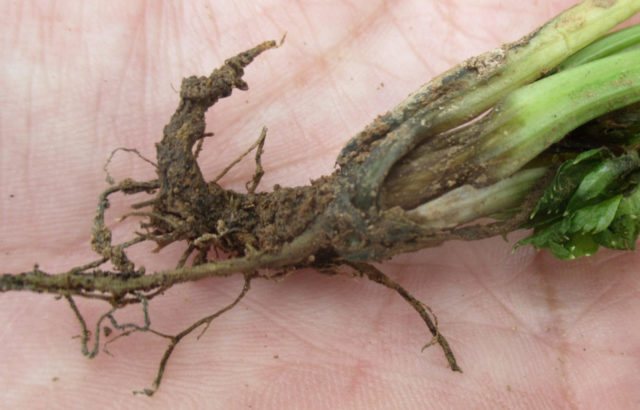

When the disease is affected, the roots rot, the plant dies. Prevention of this disease of tomatoes in the open field consists in disinfecting the soil with a solution of copper sulfate, removing the top layer, using Radomil Gold, and watering diseased tomatoes with Zaslon.
Fruit cracking
The spread of the disease is caused by temperature fluctuations, moisture deficit, hot and dry weather.


Another reason is the illiterate choice of varieties, especially with dense skin. Cracking of the fruit can appear after pinching the tomatoes from the resulting pressure of water coming from the roots.
To help vegetable growers video:
Salt to protect against caterpillars on tomatoes: recipe for use
Salt can also be used to remove scoops from tomatoes.
Instructions:
- To do this, dissolve 400 g of salt in 5 liters of water.
- Spray the leaves with this strong saline solution. Try to handle the reverse side as well.
- You can also process leaves that are as close to the ground as possible. This will help eliminate the attack of the caterpillars on the leaves.
The saline solution turns out to be quite liquid, therefore, in order for the liquid to adhere well to the leaves, you can add 50 g of laundry soap crushed on a grater to the resulting solution. It is crushed, injected into water and stirred until the soap flakes dissolve. Stir in saline.


Scoop salt
Tips from experienced gardeners
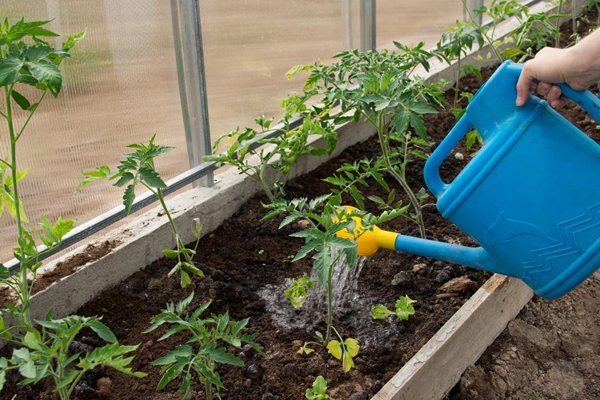

Considering how many diseases can threaten tomatoes when growing, it is best to try to avoid problems by looking after and caring for the plants. Those who have been planting tomatoes on the site for more than one year have accumulated their secrets and are ready to share them:
- It is better to prepare the soil for seedlings in the fall and keep it in the cold so that it freezes thoroughly. This contributes to the death of pathogenic flora.
- A week before transplanting into the ground, the seedlings need to be treated with Bordeaux liquid, and the day before planting, shed with a manganese solution.
- Starting from the second half of June, in the morning on tomatoes, 2-3 leaves should be removed every week until you reach the first ovary. This is necessary in order to reduce the load on the bush and prevent the outbreak of fungal diseases. Old leaves are no longer needed by plants.
- Watering is best done in the morning at the root, so that the surface of the earth has time to dry out by the evening.
- To reduce excess air humidity in the greenhouse, mulching or covering the soil with a film will help. The building must also be regularly ventilated. Condensation must not accumulate on the walls.
- Systemic fungicides can be used outdoors, not only for treatment, but also for prevention. They begin to use them at the seedling stage, and finish 2-3 weeks before harvesting. In this case, the tomatoes will be under reliable protection.
What plants scare away the scoop on a tomato?
Scoops are insects that are scared off by strong-smelling plants.Therefore, if you saw a lot of such insects in your garden last season, you can take care of planting plants with a strong smell.
List of plants:
- Chernobryvtsy
- Bird cherry
- Thyme
- Mint
- Sagebrush
- Calendula
- Cornflowers
Please note that it is necessary to plant these plants in certain flower beds, groups. It is best to surround tomato beds with similar plants. They will interrupt the smell of tomatoes, which the scoops are usually guided by. This option is ideal if scoop butterflies have appeared. But it is practically useless if there are many young larvae that eat the roots. In this case, it is better to use insecticides. There are also ways that can significantly reduce the number of scoops next year. Therefore, it is worth paying more attention to prevention.


Scoop-repellent plants
Several methods of prevention:
- Dig up the plants in the fall to a depth of 25 cm. Remove all weeds and burn them, as well as the torn tops of tomatoes. All remnants of the bushes must be burned.
- It is imperative to clean the weeds. After you dig up all the tomato bushes after fruiting, you need to burn the tops and dig the garden to a depth of 25 cm.
- The same manipulation must be done in autumn and spring, during the growth of tomato bushes. It is necessary to constantly clean the garden from weeds. The fact is that the scoop can lay eggs on weeds, so it is necessary that there are as few of them as possible.
- Also pay attention to the neighborhood. The best option would be to plant nearby plants that smell very strongly. They will knock down the scoop.
- If you see that there are holes on the plants, as well as the fruits of the tomatoes are damaged, then in this case it is necessary to use insecticides. All popular methods will be ineffective, since they are struggling rather slowly. Adults or large caterpillars are not destroyed in this way. A stronger and more serious impact is needed.
Butterfly scoops
As you can see, there are a lot of options for dealing with scoops. The main thing is not to run your garden and devote a lot of time and attention to prevention. The most basic way to prevent scoop infestation of your tomatoes is by digging deep. After all, the larvae of the moths hibernate inside the soil, and if you dig deep into the soil in the fall, then almost all the larvae will freeze over the winter.
How to prevent infection
Prevention measures:
- the soil is dug up in the fall by the method of winter plowing, without breaking earth clods (pupae are on the surface and freeze);
- apply winter watering of the soil;
- remove plant residues with roots;
- in the spring, 15 cm of soil is removed and replaced with a new one;
- the planting site of tomato bushes is treated with a strong solution of potassium permanganate or boiling water;
- the beds are weeded, removing weeds from the roots;
- plantings are periodically thinned out, the lower leaves are removed;
- plants are watered strictly at the root in the morning;
- to prevent scoops from entering the greenhouse, mosquito nets are installed on the doors and vents;
- they regularly process the bushes with folk remedies.
Plants that repel the scoop
Celery is planted in the area between the tomatoes... The smell of the plant scares away butterflies. Similar properties are possessed by: coriander, white mustard, calendula, basil, marigolds, geranium, wormwood, sage, thyme.

